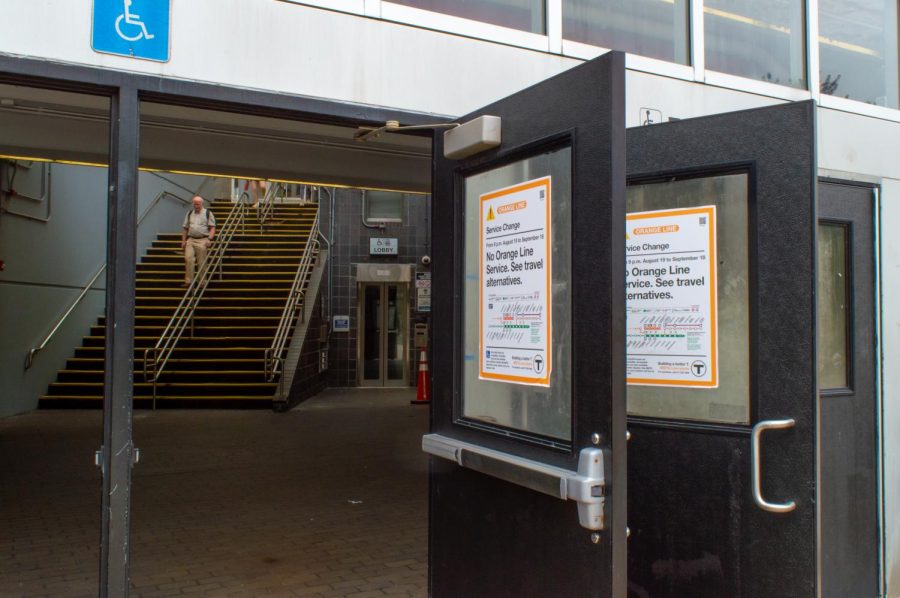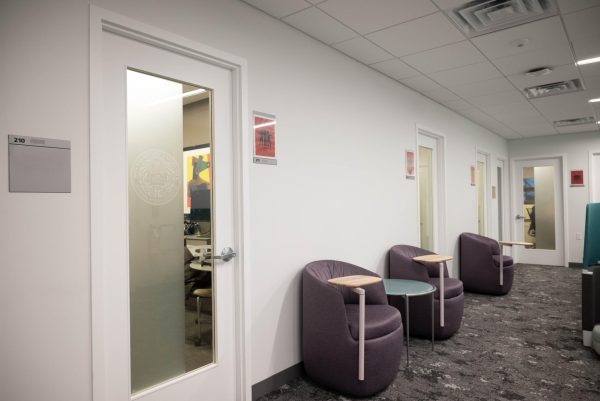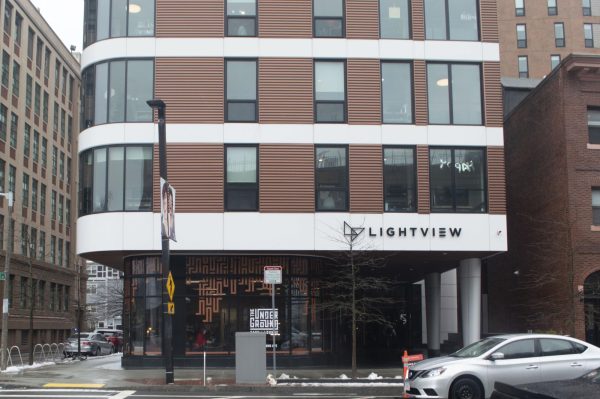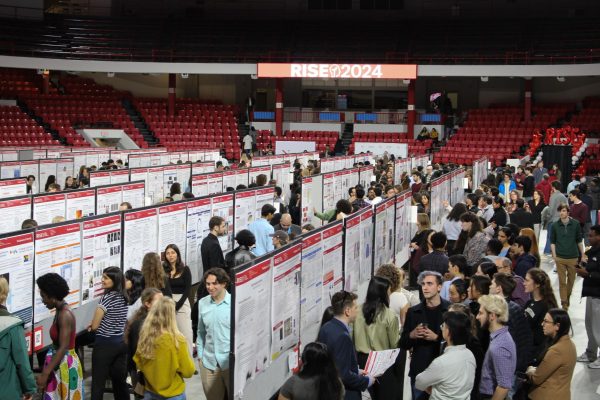Northeastern students prepare for school with Orange Line shutdown, Green Line closure
Posters on T station doors indicate the Orange Line shutdown, underway from Aug. 19 through Sept. 18.
September 7, 2022
Northeastern’s campus is home to both the E branch of the Green Line and the Ruggles Station stop on the Orange Line. On an average day, students are bustling in and out of subways and streetcars. But, as of Aug. 19, students and Boston residents have had to put their train riding on hold.
The Massachusetts Bay Transportation Authority, or MBTA, has shut down the Orange Line from Aug. 19 through Sept. 18 for repairs, including rail and signal replacement. This shutdown comes in conjunction with the closure of the Green Line from Union Square to Government Center stops from Aug. 22 through Sept. 18. The Green Line E branch between Copley and Heath stations was also closed from Aug. 6 through Aug. 21.
Students who are reliant on these lines to reach campus, commute to work or explore the city have been forced to seek alternate routes as they move through the back-to-school season.
“[The Orange Line shutdown is] just going to make getting around Boston in general so much harder,” said Adeline Muller, a second-year student in the Explore Program.
Muller said she took the T about five to 10 times a week during her first year at Northeastern as a way to explore the city. She noted that public transportation was “the way to go” with high Uber prices and her lack of car access.
“I think the bus system is probably going to be my backup, that and maybe just limiting how much I get around the city for that first month after move-in,” Muller said.
Alex Madaras, a third-year history, culture, and law student, said she will utilize her bike as her main source of transportation during the Orange Line shutdown. They live in Jamaica Plain and recognize the need for the shutdown, despite the inconvenience it will cause them.
“I was like initially like, ‘Oh, that’s a bummer,’ and I was lucky enough to kind of have something to fall back on, but I know that that’s not necessarily the case for other people,” Madaras said.
In a press release, the MBTA said the shutdown will allow projects to be delivered on an accelerated timeline, as opposed to the original plan which would take five years of night and weekend work.
Madaras said after reading articles about the shutdown, the month-long Orange Line hiatus made sense to her, as opposed to prolonging projects.
She said she sees the shutdown’s impact on Northeastern students as a reflection on the university, rather than the city.
“The reason that we rely so much on the trains is because we are being pushed off campus by the university itself, so if we had affordable housing, and if we have enough housing proportional to the student population, we wouldn’t have to worry about a shutdown affecting our ability to get to class on time,” Madaras said. “And that’s not the fault of the city for trying to make the train safer, it’s the fault of the university.”
Madaras noted that the T is crucial to the livelihood of Bostonians who are not students and rely on it for transportation to work. They said this is a safety issue, and that it’s important to maintain standards of public transportation.
“I was also really grateful that they are finally paying enough attention to the Orange Line because I have been getting increasingly nervous about all of these episodes that have been happening safety-wise, like the fires and the derailings,” Madaras said.
The Orange Line shutdown maintenance will include, but is not limited to, replacement of over 3,500 feet of tracks and two crossovers, along with tie replacement and concrete work, according to a press release by the MBTA.
In lieu of the Orange Line, transportation options include the Commuter Rail and Bluebikes, both free throughout the city amid the shutdown, and shuttle buses. Buses also replaced the E branch of the Green Line during its closure.
“I know the message that we’re really trying to send out is to not drive, if at all possible, because traffic is going to be really bad during the shutdown,” said Hannah Archer, a co-op on the transit team of the policy and planning division at the Boston Transportation Department and a Northeastern graduate student. Her division of the Boston Transportation Department is working under the city and in conjunction with the MBTA.
While students in Boston over the summer planned for the Orange Line shutdown in mid to late August, some already felt the impact of the loss of a T line with a portion of the Green Line E Branch out of service through Aug. 21.
Eliza Greenberg, a third-year political science and international affairs student, uses the Green Line E branch to commute to work, which she said is about a 45-minute walk from her summer housing in Mission Hill.
To make up for the temporary loss of the Green Line E branch, she opted to take the 39 bus. Greenberg said the two main issues she faces are that the bus is often late and crowded. She said she has also noticed recent construction on Huntington Avenue as a result of the temporary closure.
“I think it’s definitely kind of a failure on the MBTA’s part to not do this gradually over time, before it got this bad,” Greenberg said about shutdowns.
The MBTA has released a “A Rider’s Guide to Planning Ahead” regarding preparations and what is to be expected. Despite the inconvenience faced by Boston residents throughout the next month, the agency anticipates the repairs and updates to the transportation lines.
“It was kind of mixed emotions,” Madaras said. “I was glad to see that they’re finally investing some time and effort into making it safer, because so many people rely on it, and obviously it is an inconvenience for a couple of weeks personally for me, but it’s not something that I can’t manage.”


















